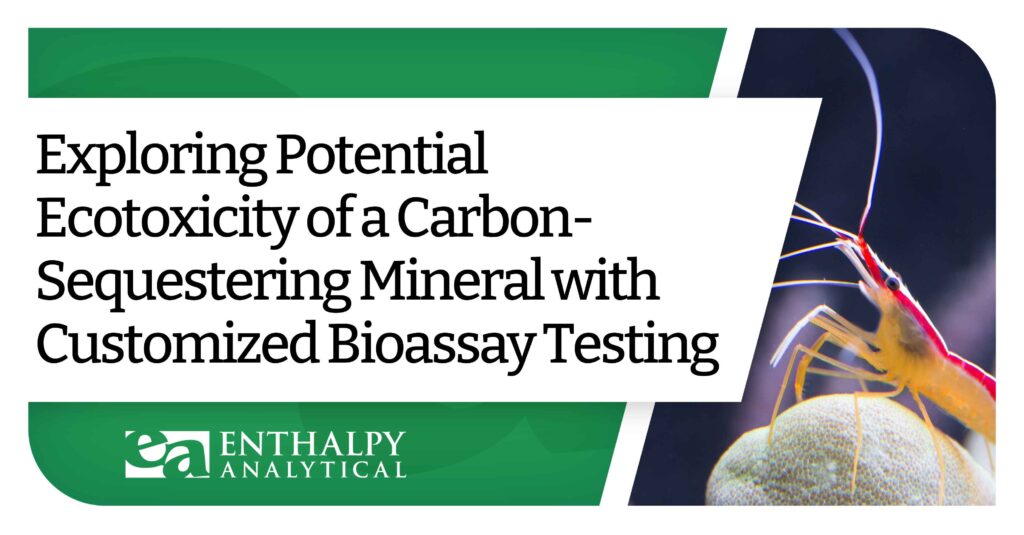CASE STUDY
Exploring Potential Ecotoxicity of a Carbon-Sequestering Mineral with Customized Bioassay Testing
Opportunity
Enthalpy partnered with Project Vesta, an organization specializing in the science of olivine deployment for carbon capture, to evaluate potential ecotoxicological effects of the mineral olivine to marine organisms. Olivine is a naturally occurring silicate mineral that can contain heavy metals which have the potential to leach. It is also easily altered by weathering and has the potential to counteract ocean acidification by increasing the rate of CO2 absorption. Since limited ecotoxicological data was available for this mineral, Project Vesta reached out to Enthalpy to produce baseline data that could be used to assess ecologically safe application rates of olivine in the receiving environment.
Challenge
Adapting standardized toxicity test methods for novel uses and uncommon sample types requires deep scientific understanding of these tools, their appropriate uses, and their limitations. As with many innovative toxicity investigations, our approach was iterative.
In designing the study, we took into account multiple geographies and regulatory frameworks which may impact olivine deployment. Our expert scientists and lab practitioners also had to consider appropriate method and species selection, inherent mineral properties (such as potential for leaching of metals and physical organism interferences), application rates, long and short-term exposure scenarios, and other confounding factors.
Solution
Our experts developed a comprehensive testing battery to evaluate olivine in short-term and long-term exposure scenarios for both solid phase sediment and water-based assays. We considered effects of olivine to sediment-dwelling benthic organisms as well as free-swimming near-shore and pelagic species. Our team designed a customized leaching process for the water-based testing to capture potential ecological effects at the peak of the dissolution process, replicating the natural weathering that olivine would experience when deployed in the receiving environment.
Our general approach applied procedures from established EPA toxicity testing methodology, with supplemental guidance from OECD and ASTM methods where needed. The test designs hinged on combining methodologies intended for ambient or effluent discharge samples, sediment assessments, and product evaluations to create a holistic testing framework. Biological testing was accompanied by chemical analyses to form a multiple line of evidence approach, connecting the ecotoxicity test outcomes to the presence and absence of chemical compounds in the waters, sediments, and tissues.
Species selected for testing represent a wide range of early life stage indicator organisms commonly used in discharge monitoring, ambient water evaluations, dredged materials evaluations, and risk assessments.
Testing was conducted in three parts:
- Evaluation of potential acute and chronic effects to sediment dwelling species, such as amphipods
- Evaluation of aqueous matrix with a variety of vertebrate fish, invertebrates, and plant species
- Evaluation of bioaccumulation potential and long-term exposure effects with benthic clams and worms
The study, which was conducted over a period of several months, produced sufficient data for multiple scientific publications and aided Project Vesta’s effort in piloting deployment of olivine at multiple locations within the United States and internationally.


